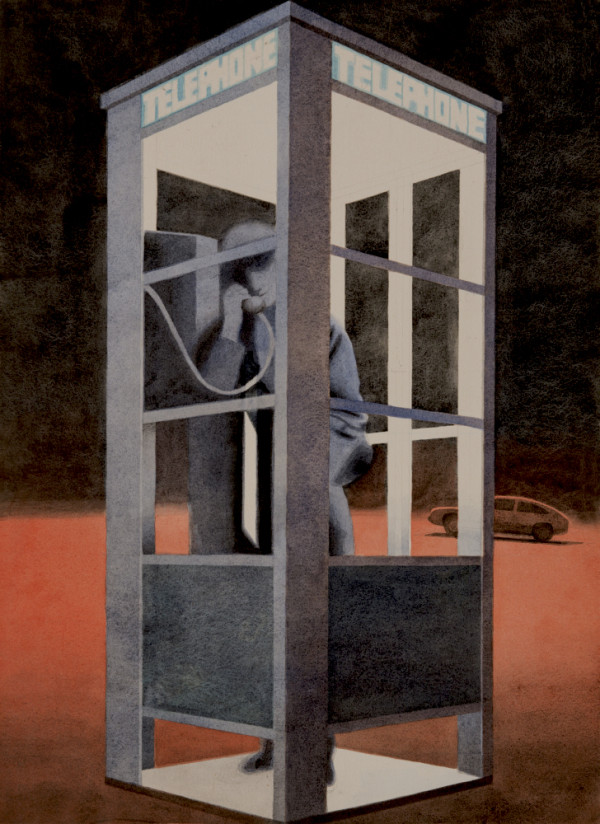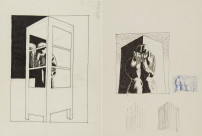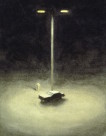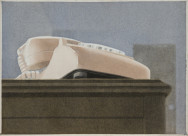The first study for this image was made in a sketchbook Robert took with him to Toronto at the time of his radiation treatments for cancer. The figure in the booth was a man, more than likely Robert himself, and may have reflected how the artist felt being away from home and friends. In the finished painting, Robert fictionalized his experience by creating a surrogate female figure in a night-time sprawl; its vast emptiness contrasts with the enclosed space of the booth.
The painting featured in the Seal Upon Thine Heart series, and depicts a turning point in the story after the heroine’s arrest, just before her deportation back to Canada. The red ground creates a feeling of danger contrasting with the cold blue light in the booth. The phone does not seem like a connecting device to bring two people together; rather it seems like a cage that the homeless woman is trapped inside.
The work is reminiscent of Alex Colville’s painting, Departure, 1960, which shows a woman at a phone booth, located on the waterfront, contrasted with an ocean ship visible in the distance. Robert’s image also features a phone booth and a distant means of transport. Colville was influenced by 17th century Dutch paintings by Vermeer and others featuring a woman in a domestic setting reading a letter, while a nearby painting on the wall displays a storm-tossed ship at sea or a map of distant places. These genre scenes give a sense of home and away and the tenuous means of connecting the two. Colville and Robert update this genre, with hints of how people’s increased mobility lead to feelings of rootlessness and alienation.




